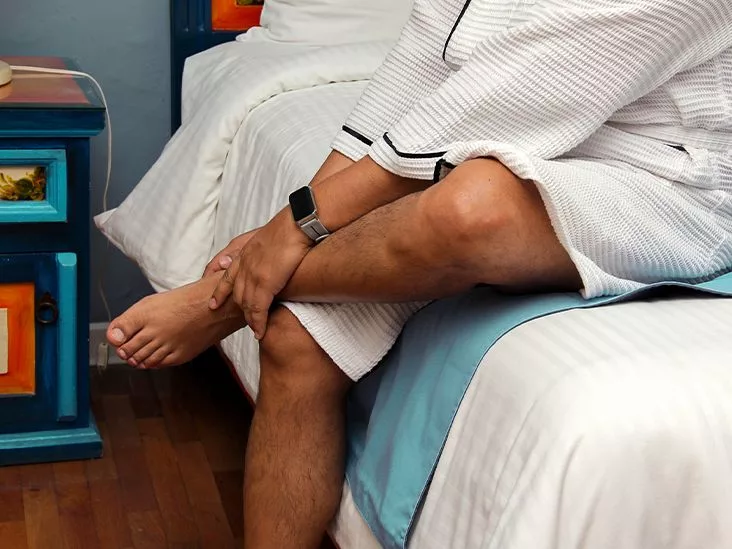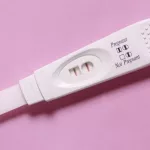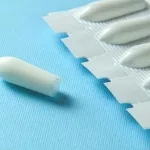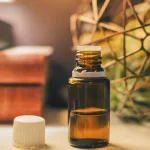So, you’ve noticed a weird, itchy bump on your ankle and you’re wondering if it could be linked to your kidney condition. The short answer is: yes, IgA nephropathy can sometimes bring a rash along for the ride. That rash isn’t just a cosmetic nuisance—it can be a helpful clue that your kidneys are under stress or that an immune‑mediated vasculitis is developing. In the next few minutes we’ll walk through exactly what that rash looks like, why it shows up, how doctors figure it out, and what you can actually do to feel better. Think of this as a friendly chat over a cup of tea, not a textbook lecture.
Rash Appearance
When IgA nephropathy decides to paint a picture on your skin, it usually prefers tiny, dome‑shaped bumps. They’re often described as “small, raised spots” that can be pink‑red, purple, or a bruise‑like color. The spots are typically 1–5 mm in diameter, very itchy, and love to gather on the lower legs, buttocks, and sometimes the arms. If you run your fingertip over them, they feel a bit like sandpaper—rough, yet not painful unless you scratch them.
What makes this rash different from the generic itchiness you might get with any kidney disease is the pattern. According to Healthline, IgA‑related rashes often appear as clusters of dome‑shaped bumps that are “extremely itchy” and can form rough, raised patches. In contrast, uremic pruritus (the itchiness many people feel when kidney function is low) is usually a diffuse, burning sensation without any distinct bumps.
| Feature | IgA Nephropathy Rash | Uremic Pruritus | Other Skin Issues (e.g., eczema) |
|---|---|---|---|
| Shape | Small, dome‑shaped bumps | Diffuse, no bumps | Varied (scaly, oozing) |
| Color | Pink‑red to purplish | Usually no color change | Red, flaky |
| Location | Lower legs, buttocks, sometimes arms | Anywhere | Typically elbows, knees |
| Itch level | Very intense | Moderate‑burning | Variable |
Why It Happens
Behind every rash is a story, and in the case of IgA nephropathy the story is all about immune complexes. Your body makes a type of antibody called immunoglobulin A (IgA). In IgA nephropathy, these IgA molecules decide to lodge themselves in the tiny filters of the kidneys—called glomeruli—and cause inflammation. Sometimes, the same IgA‑laden immune complexes wander into the tiny blood vessels of the skin, sparking a condition known as IgA vasculitis (formerly called Henoch‑Schönlein purpura or HSP).
A 2021 case study published in Cureus illustrates this perfectly: a 55‑year‑old man presented with a lower‑extremity rash that turned out to be leukocytoclastic vasculitis loaded with IgA deposits. The skin biopsy was the piece that solved the puzzle, confirming that the rash wasn’t just a coincidence—it was a direct manifestation of his IgA disease.
The rash can also appear later, when chronic kidney disease (CKD) progresses to a stage where toxins build up in the blood. Those toxins can irritate the skin, leading to itchy patches that mimic the IgA‑related rash. The key difference is that CKD‑related rashes are usually more uniform and lack the classic “dome‑shaped” bumps seen in IgA vasculitis.
Other triggers—like recent respiratory infections, hepatitis C reactivation, or even certain medications (allopurinol is a classic example)—can tip the balance. An abstract from the 2009 Society of Hospital Medicine conference documented a 65‑year‑old patient whose purpuric rash blossomed after starting allopurinol, only to reveal elevated IgA levels and a skin biopsy confirming HSP research presented at SHM. So, while the rash can be a sign of disease progression, it can also be an early warning flag tied to a specific trigger.
How Doctors Diagnose
Diagnosing a rash linked to IgA nephropathy is a bit like detective work. First, your doctor will take a detailed history—when the rash started, whether you’ve had recent infections, any new medications, and if you’ve noticed changes in urine (like blood or protein). They’ll also ask about classic IgA nephropathy symptoms: hematuria, proteinuria, swelling in the legs, and high blood pressure.
Next comes the lab work. A urine analysis will show if there’s blood or protein—both red flags for kidney involvement. Blood tests often reveal elevated serum IgA levels, while complement components C3 and C4 usually stay normal (a clue that we’re dealing with IgA, not another type of vasculitis).
If the rash is still a mystery, a skin biopsy is usually the definitive step. The sample is stained and examined under a microscope; if you see “leukocytoclastic vasculitis with IgA deposits,” the diagnosis is virtually confirmed. This is exactly what the SHM abstract described: immunofluorescence showed perivascular IgA, cementing the link between rash and IgA vasculitis.
In more complex cases—especially when kidney function is rapidly declining—doctors may also perform a kidney biopsy. This tiny piece of kidney tissue can reveal IgA deposits in the glomeruli, helping to decide whether more aggressive immunosuppressive therapy is needed.
Treating the Rash
Now the part we’re all eager to hear: how do we make that itchy rash stop? Treatment comes in three flavors—topical, systemic, and lifestyle—each aimed at either soothing the skin or tackling the root cause.
Topical relief is the first line for mild cases. Over‑the‑counter hydrocortisone (1%) can calm the itch without the side effects of stronger steroids. Pair it with a fragrance‑free moisturizer to keep the skin barrier intact. Remember, moisturizers are your skin’s best friend—think of them as a cozy blanket for irritated skin.
Systemic corticosteroids (like prednisone) become the go‑to when the rash is more extensive or when kidney labs are worsening. A typical regimen might start at 0.5–1 mg/kg daily, then taper over several weeks. Yes, steroids have a reputation for causing weight gain, mood swings, and bone thinning, so your doctor will balance the dosage with your overall health.
If steroids alone aren’t enough, immunosuppressants such as mycophenolate mofetil, azathioprine, or cyclophosphamide may be added. They specifically target the immune system’s over‑activity that’s driving IgA deposition. This approach is usually reserved for rapid kidney decline or a rash that refuses to calm down.
Don’t forget the kidney‑protective meds—ACE inhibitors or ARBs. They lower blood pressure, reduce protein loss in the urine, and have the side benefit of lessening skin inflammation in many patients.
Finally, lifestyle tweaks can make a surprising difference. A low‑salt, moderate‑protein diet reduces the workload on the kidneys, which can indirectly lessen rash severity. Staying hydrated, avoiding tight clothing that rubs the rash, and using gentle, hypoallergenic soaps are simple yet effective steps.
Real‑World Stories
Case 1 – The 55‑Year‑Old with a Lower‑Extremity Rash John (name changed) was a 55‑year‑old accountant who noticed a reddish, itchy patch on his calves. He thought it was a bug bite, but the rash persisted. After a skin biopsy confirmed IgA‑positive leukocytoclastic vasculitis, his nephrologist started a short course of prednisone. Within two weeks, the rash faded and his creatinine stabilized. John’s story underscores how a simple skin check can catch a kidney flare early.
Case 2 – A Teenager’s Purpuric Surprise Emily, a 13‑year‑old, woke up with purple spots on her buttocks after a sore throat. Her pediatrician recognized the classic “palpable purpura” of IgA vasculitis and ordered urine studies, which showed microscopic hematuria. Emily was monitored closely; her rash disappeared, and her kidney function remained normal. The lesson? Even kids can get a rash that signals a kidney issue, and prompt attention can prevent long‑term damage.
Both stories highlight the importance of listening to your skin. If you notice an unusual rash, especially alongside any of the classic IgA nephropathy symptoms—blood in the urine, swelling, or high blood pressure—don’t wait. A quick call to your healthcare team can make a world of difference.
Balancing Benefits & Risks
Every treatment has a trade‑off. Below is a quick matrix to help you weigh the options.
| Treatment | Primary Benefit | Major Risk | When to Choose |
|---|---|---|---|
| Topical steroids | Fast itch relief | Skin thinning if over‑used | Mild, localized rash |
| Systemic corticosteroids | Controls inflammation, protects kidney | Weight gain, glucose rise, bone loss | Moderate‑to‑severe rash + worsening labs |
| Immunosuppressants (mycophenolate, cyclophosphamide) | Targets underlying immune cause | Infections, GI upset, liver toxicity | Rapidly progressing disease or steroid‑resistant rash |
| Supportive care only | No medication side‑effects | May not stop rash or kidney decline | Very mild itch, stable kidney function |
Think of this matrix as your “decision compass.” If you’re unsure which path to take, bring the table to your next appointment—your doctor will help you navigate the risks and benefits based on your personal health picture.
Conclusion
Seeing an unusual rash when you already live with IgA nephropathy can feel like an unwelcome surprise, but it’s also a valuable signal. The rash usually appears as tiny, itchy, dome‑shaped bumps that prefer the lower legs and buttocks. It arises from IgA‑immune complexes nesting in skin vessels, from kidney‑related toxin buildup, or from a trigger like an infection or medication. Accurate diagnosis hinges on a careful history, urine and blood tests, and often a skin biopsy that reveals IgA deposits.
Treatment ranges from soothing topicals to systemic steroids and, when needed, stronger immunosuppressants—always balanced against potential side‑effects. Lifestyle tweaks, especially a kidney‑friendly diet and gentle skin care, can amplify the benefits of any medication.
Most importantly, don’t ignore the rash. Share photos with your doctor, ask for a biopsy if the picture isn’t clear, and keep an eye on your kidney labs. Early detection and a collaborative treatment plan can keep both your skin and kidneys feeling (and looking) better.
Have you experienced a rash that turned out to be linked to kidney disease? How did your healthcare team approach it? Drop a comment below or reach out to your nephrologist—your story might just help someone else navigate the same journey.


















Leave a Reply
You must be logged in to post a comment.